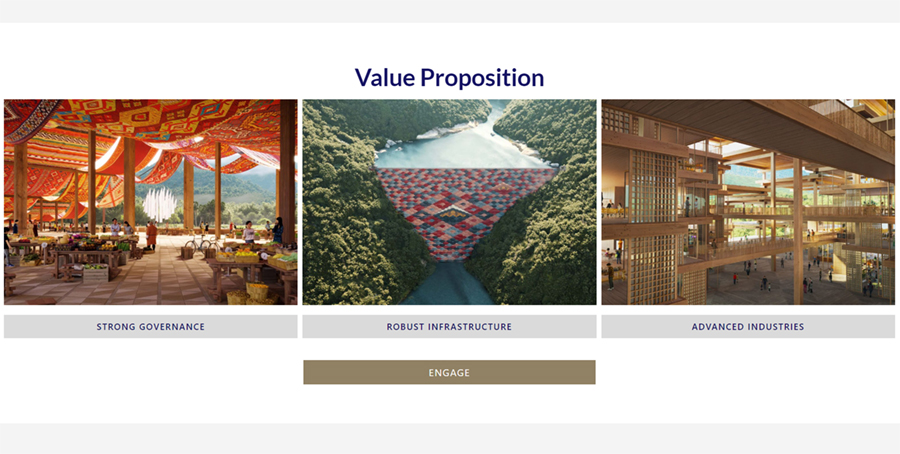
The Gelephu Mindfulness City, a special administrative region, is envisioned as the greenest, cleanest, and safest city globally, combining material and spiritual advantages. Strategically positioned on a land bridge connecting South and Southeast Asia, home to over 2.7 billion people, the city will feature world-class infrastructure powered entirely by renewable energy, supporting a sustainable population of about one million residents. The GMC website and its social media pages were launched recently.
The website, gmc.bt, and social media pages named Gelephu Mindfulness City on Facebook, Instagram, and LinkedIn were made public recently.
 According to the website, Gelephu Mindfulness City is located at the crossroads of South Asia, Southeast Asia, and China, positioned will become a hub for regional connectivity and economic exchange.
According to the website, Gelephu Mindfulness City is located at the crossroads of South Asia, Southeast Asia, and China, positioned will become a hub for regional connectivity and economic exchange.
The city, which was initially planned on a little over 1,000 square kilometres, will now span 2,500 square kilometres.
 The value proposition that the city offers investors and future residents is strong governance, robust infrastructure, and advanced industries.
The value proposition that the city offers investors and future residents is strong governance, robust infrastructure, and advanced industries.
On the governance side, according to the website, GMC has autonomous executive, legislative, and judiciary systems that blend robust policies with mindful incentives designed to empower residents and businesses to reach their fullest potential.
As for infrastructure, Gelephu Mindfulness City is built on a foundation of world-class infrastructure, seamlessly integrating state-of-the-art technology with sustainable practices.
The website further states that with an international airport, advanced rail networks, and cutting-edge digital connectivity, all powered by 100 per cent renewable energy, the city will ensure that every facet of life and business thrives in harmony with nature.
According to the website, the Gelephu Mindfulness City represents an opportunity for businesses and professionals to grow their businesses and careers through seven core industries.
One of the seven core industries is agri-tech and forestry, which looks at scaling up the export-oriented Bhutan brand agri-food sector.
With the construction of the Gelephu International Airport underway, the airport economy is another core industry, which presents an immediate opportunity to become an aviation and logistics hub that will serve the South Asian region.
Similarly, education and knowledge as a core industry is the cornerstone of the city’s emerging knowledge economy, which will support and drive growth across all seven core industries.
Finance as another core cluster will offer wealth management services to family offices and high-net-worth individuals. GMC will offer investment avenues into some of the largest economies in India, China, and Bangladesh.
Other core industries are green energy and tech industries, health and wellness, and spirituality, which look at tapping into large ICT markets using renewable energy, making GMC a leader in medical tourism, integrative medicine, and research and development and becoming a prominent centre of Vajrayana Buddhism.
The website also mentions eight world-renowned foreign expert companies involved in various aspects of the city’s development.
Some of the prominent ones are Magnolia Quality Development Corporation Limited, a project management firm from Thailand, CISTRI Strategic Economics, an Australian economics and land-use planning firm based in Singapore, and Bjarke Ingels Group, an urban design and landscaping firm.
Sherub Dorji









